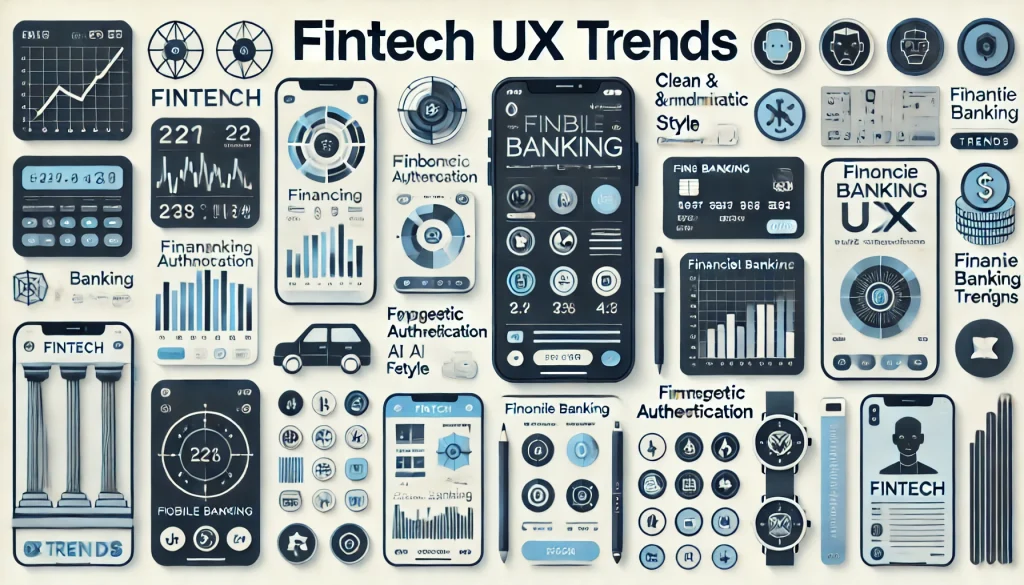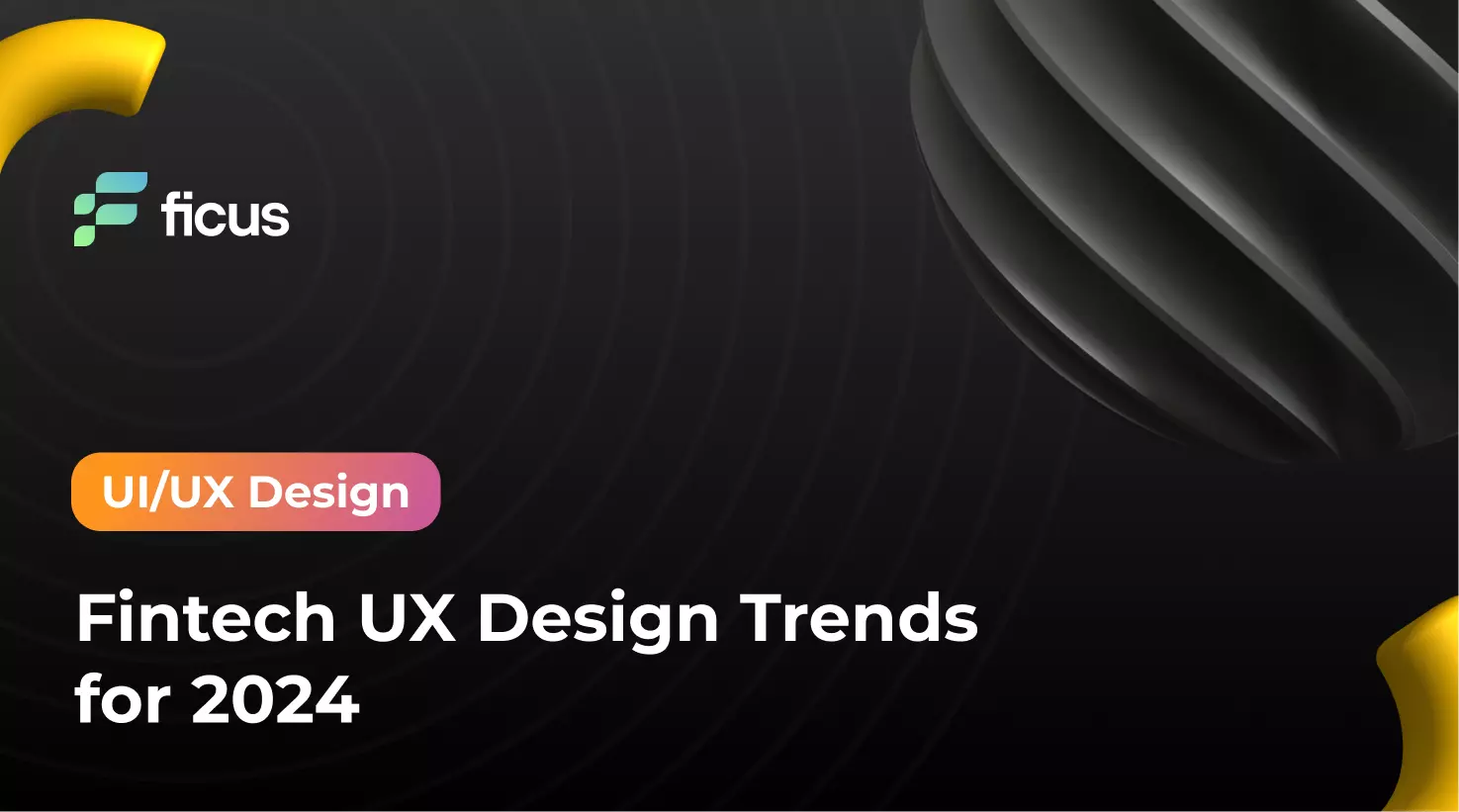Banking and finance, historically aloof, have been transformed by fintech’s UX design innovations. By simplifying complex financial jargon, fintech apps reshape how we manage money. Digital banks streamline processes, enable fast business funding, and drive economic growth. This evolution has made website design central to building trust and engaging users. A well-designed app markets and retains loyal customers. As Fintech UX design trends evolve, the focus remains on clarity and visual appeal to ensure an intuitive experience. Ultimately, user-friendly interfaces redefine the banking terrain, promote financial inclusion, and empower individuals and businesses.
- Fintech UX design trends shape future banking experiences.
- Personalization and AI integration redefine UX design in fintech.
- Fintech innovation UX design fosters financial inclusivity.
What is Fintech UX Design?
Fintech UX design changes financial apps, focusing on electronic safety, easy-to-use user interfaces, and smooth navigation. It bridges the gap between complex monetary procedures and daily customers, empowering them to care for money easily. Among strong competition, Fintech businesses introduce UIs with customization, gamification, AI integration, and distinctive brand identities. These trends redefine money management, making it engaging and delightful. Customers no longer feel overwhelmed; they discover confidence in taking control of their financial resources via clear user interfaces and valuable features. As Fintech apps lead the charge, they offer functionality and an immersive experience, setting new standards for banking interactions.

The Evolution of Fintech UX Design
The Evolution of Fintech UX design has been amazing, adjusting to altering user requirements and technological advancements. Initially, banking user interfaces were complicated, impeding user experience. Nevertheless, patterns emerged with time, focusing on simplicity and access. This evolution changed monetary solutions, making money management and investing even more instinctive. As Fintech businesses continue to innovate, they incorporate personalized functions, AI-driven remedies, and captivating user interfaces. These advancements do improve customer contentment and foster trust and loyalty. The evolution of UX design in fintech represents a change in the direction of user-centricity, where seamless communications encourage individuals to navigate monetary landscapes with confidence, noting a substantial turning point in banking convenience and ease of access.
Design creates culture. Culture shapes values. Values determine the future.
Robert L. Peters
Why is UX important for fintech products?
In the fintech industry, UX design is the foundation that defines the user experience and drives innovation. It provides intuitive interfaces and helps to increase trust and engagement. With UX design in fintech, companies can stay ahead of the competition, adapt to changing user needs, and remain competitive in dynamic markets.
Usability
The importance of fintech UX design for products is to improve usability and ensure a seamless interaction for users solving complex financial tasks. In the competitive environment of fintech design, usability is becoming a crucial factor affecting user satisfaction and retention. Intuitive interfaces and simple processes simplify financial management, inspiring confidence in users. Fintech companies follow Fintech UX design trends and prioritize usability by integrating features that simplify tasks such as money transfers and investment tracking. With users seeking convenience and efficiency, prioritizing usability in fintech products is paramount, driving customer engagement and loyalty. Ultimately, a user-centric approach to fintech design builds trust and empowers people to manage their finances effectively, marking a significant advance in banking inclusion.
Trust and Credibility
In fintech products, UX design is paramount for building trust and credibility. A flawless user experience helps to build trust among users by reassuring them of the platform’s reliability. Trust is built through intuitive interfaces and transparent processes that meet user expectations. In the competitive environment of Fintech UX design trends, the priority of trust and reliability makes products stand out, attracting and retaining loyal customers. Users gravitate towards platforms they trust, where their financial information is secure, and their needs are met efficiently. Therefore, investing in Fintech UX design to build trust and credibility is beneficial and necessary for the success and sustainability of Fintech products.
Reduced Friction
Reducing friction in Fintech UX design simplifies the user experience, increasing efficiency and satisfaction. Users can complete tasks effortlessly, minimizing obstacles to navigating financial processes such as account and transaction management. This helps to increase engagement and loyalty to the platform. In addition, it is optimized to reduce friction, user frustration, and abandonment, which helps increase retention and conversion rates. In the competitive arena, prioritizing a seamless user experience sets brands apart and creates positive perceptions. Consequently, companies that prioritize friction reduction in their UX design in Fintech gain a competitive advantage and foster long-term customer relationships.
Accessibility and Inclusivity
Accessibility and inclusivity in Fintech UX design ensure that economic services are readily available to everybody, no matter their capacities or backgrounds. By designing user interfaces and functions that fit varied needs, fintech UX design promotes financial inclusion and empowers individuals who may encounter barriers in standard financial systems. This expands the user base and fosters a sense of belonging and dignity among underserved communities. In Fintech trends, focusing on accessibility and inclusivity is a morally critical benefit, as it opens new markets and enhances client loyalty.
User engagement and retention
The importance of usability in fintech products is evident in its ability to drive user acquisition and retention. By focusing on intuitive design and user-friendly interfaces, fintech companies can improve the overall user experience, encouraging users to interact with the platform more frequently. Additionally, incorporating elements from Fintech UX design trends helps keep the product relevant and appealing to users over time. Engaged users are more likely to remain loyal to the platform, which increases retention rates and contributes to long-term success. Therefore, prioritizing usability in fintech products is essential to increase user engagement and customer retention, which ultimately contributes to the overall growth and sustainability of the platform.
Competitive advantage
Acquiring a competitive advantage in fintech requires leveraging Fintech UX design to improve user experiences. An exceptional UX design raises consumer contentment and urges greater interaction, promoting loyalty and bringing in new individuals. Effective UX design in Fintech differentiates a product from its rivals by providing intuitive, user-friendly user interfaces that fulfill progressing user needs. By taking on the most recent design patterns, businesses can promptly reply to market changes, remaining ahead of the competition. This approach improves customer retention and strengthens brand reputation, inevitably contributing to lasting success in the competitive fintech market.
Ready to revolutionize your fintech app’s user experience in 2024?
Contact UsTrends in the Fintech UX Design
Analyzing Fintech UX design trends reveals how innovation shapes user experiences. Modern fintech UX design prioritizes personalization, data visualization, and security. These trends ensure that financial products are user-friendly, engaging, and secure, meeting the evolving needs of tech-savvy consumers.
1. Gamification & Rewards System
Managing finances isn’t very easy for everybody, but Fintech UX design aims to change that. Recently, gamification has become a crucial trend in fintech, utilizing computer-animated videos, emojis, and infographics to boost financial literacy. This approach helps users make informed decisions while promoting the company’s services. By incorporating gaming experiences, fintech applications boost individual engagement and retention. Functions like points, badges, challenges, and day-to-day leaderboards develop a gamified banking experience, urging customers to meet their monetary goals more effectively. Welcoming Fintech UX design trends ensures these applications continue to be interesting, educational, and straightforward.
2. Create a Super App
To stay on par with the fast-paced world of fintech, companies are creating super apps that work as one-stop services for all customer requirements. The trend now is to develop extensive platforms like PhonePe, Paytm, and Amazon Pay, where consumers can manage jobs such as bill payments, reservations, and cash transfers. This not only conserves time but likewise streamlines tasks for users. Super applications enable better data evaluation and offer a smooth experience with a regular UX design. Welcoming Fintech UX design trends streamlines financial administration, using users’ holistic view of their financial wellness and reflecting the value of the UX design in Fintech.
3. Visualize the Data
Data visualization improves financial management by highlighting key points of budgeting, investment, and financial health. The use of charts, graphs, and other visuals helps users analyze financial behavior and spending habits. This approach simplifies information, helps with budgeting, and motivates users to achieve their financial goals. Implementation of Fintech UX design ensures that these visual tools are user-friendly and effective. Adopting Fintech UX design trends can further increase user engagement and satisfaction by providing a clear, interactive visual representation of financial data. This simplifies complex information and empowers users to make informed financial decisions and track their progress effectively.
4. Develop an Intelligent Chatbot
Intelligent chatbots are revolutionizing the industry by instantly resolving queries and offering ongoing support. AI-powered assistants increase customer satisfaction through personalized recommendations and reduce costs. According to ChatBots Magazine, chatbots can reduce the cost of servicing business customers by 30%. In addition to support, they provide a wide range of services. According to forecasts, by 2027, artificial intelligence intervention in fintech will reach $31.71 billion, i.e., an increase of 28.6%. Integrating Fintech UX design ensures that these chatbots are intuitive and user-friendly. Following the Fintech UX design trends helps companies to use artificial intelligence effectively, ensuring smooth interaction and maintaining a high level of customer satisfaction.
5. Use Different Biometric Technologies
Safety and security are the main concerns of fintech app users. Companies are exploring different biometric technologies, such as face recognition, fingerprint scanning, and voice recognition, to improve the security of user data. These technologies not only increase security but also make users feel more secure. Fintech UX design incorporates these features to provide a smooth and secure experience. Apps such as PhonePe and Paytm use fingerprint scanning and facial recognition to provide security, offering a simple alternative to passwords or PINs. Keeping pace with Fintech UX design trends, Kotak Mahindra Bank also provides facial recognition for mobile banking login, effectively combining security with ease of use.
6. Give Your App an Identity
Remember visiting a bank where the assistant greets you warmly, making you feel supported? The digital space can replicate this experience. Giving your app a unique identity helps it stand out as a reliable partner. Consistent human language combined with strong visual elements creates a welcoming atmosphere. Fintech UX design incorporates these principles to build trust and rapport with users. Embracing Fintech UX design trends and apps that maintain a friendly and consistent tone makes customers feel valued and engaged. This approach enhances the user experience and fosters loyalty, making your app a preferred choice for financial management.
7. Personalize the Experience
Personalizing the financial experience gives users more control over the product. Fintechs can tailor the UI to match individual choices by analyzing preferences, behavior, and financial goals. Using customer data, they can recommend personalized savings or investment plans aligned with user goals and risk tolerance. Additionally, AI assistants or chatbots can provide personalized advice and guidance. Fintech UX design ensures these features are intuitive and user-friendly. Embracing Fintech UX design trends, such as personalization, enhances user satisfaction and engagement, making the app more relevant to each user’s unique financial situation and needs.
8. Make Your Fintech Go Social
Merging social media with Fintech is a popular trend in Fintech UX design for 2024. Many financial decisions involve family and friends, making familiar social media UIs useful. Features like splitting expenses can utilize the “feed” format. Other social aspects include managing finances with a spouse or parents. Imagine an app that lets you split bills with friends and keeps you updated on the best investment decisions. Fintech apps are evolving from payment platforms to personal financial advisors. For instance, PhonePe’s “split the bill” feature exemplifies this UX design in fintech, enhancing usability and social connectivity.
9. Create a Seamless Onboarding
Revolutionary Fintech UX design puts efficiency and user-centricity first. Traditionally, complex tasks such as opening an account have been simplified to eliminate paperwork and long queues. The idea is to simplify processes while ensuring comprehensive data collection. Breaking down the onboarding process into manageable steps makes for a smoother experience, minimizing user frustration. Smaller interactions reduce cognitive load, increasing engagement and completion rates. This trend emphasizes user empowerment through seamless transitions, laying the groundwork for a hassle-free digital banking experience. As digital transformation continues, optimizing the user experience remains a fundamental aspect of UX design in FinTech, contributing to increased customer satisfaction and loyalty.
10. Build a Community
Innovating in Fintech UX design involves fostering a sense of community among users. Establishing a platform where customers can interact, share insights, and address concerns contributes to a dynamic feedback loop. This engagement facilitates staying abreast of emerging trends and enables swift resolution of user issues. By cultivating a community, fintech companies create a collaborative environment where users feel valued and heard. This trend reflects the evolving landscape of UX design in fintech, emphasizing the significance of user involvement in shaping product development and enhancing overall user experience. Building a vibrant community fosters mutual trust and strengthens the bond between users and fintech platforms.
Final Words
In conclusion, the evolution of Fintech UX design offers a fertile base for innovation and advancement. Embracing the latest Fintech UX design trends is crucial for companies seeking to remain competitive and resonate with users. At Ficus Technologies, we craft tailored UX design in fintech solutions, leveraging cutting-edge trends to create intuitive and engaging user experiences. Our holistic approach ensures that every aspect of the user journey, from onboarding to daily interactions, is optimized for maximum usability and satisfaction. By staying abreast of emerging trends and user preferences, we empower fintech companies to differentiate themselves in a crowded market and foster long-term customer loyalty. Partner with Ficus Technologies today to unlock the full potential of your fintech products and establish a competitive advantage.
Some key Fintech UX design trends 2024 include personalized experiences tailored to individual user needs, integrating advanced AI and machine learning technologies to enhance user interactions, and adopting biometric authentication methods for improved security and convenience. Additionally, there is a focus on creating seamless omnichannel experiences across various devices and platforms and incorporating gamification elements to make financial management more engaging. These trends aim to elevate user experiences, foster trust, and drive user engagement in the rapidly evolving financial technology landscape.u003cbru003e
AI enhances fintech applications by automating repetitive tasks, such as customer service inquiries and fraud detection, improving efficiency and reducing operational costs. It also enables personalized recommendations and insights based on user behavior and financial data analysis, enhancing user experiences. Additionally, AI-powered algorithms can identify patterns in large datasets, enabling more accurate risk assessments and investment predictions. This leads to better decision-making and potentially higher returns for users. AI empowers fintech applications to deliver smarter, more efficient, and more personalized financial services, ultimately improving customer satisfaction and driving business growth.u003cbru003e








